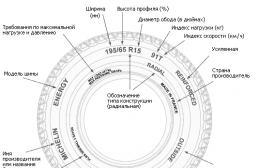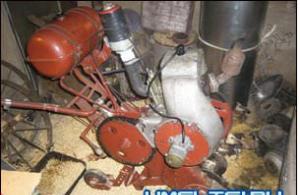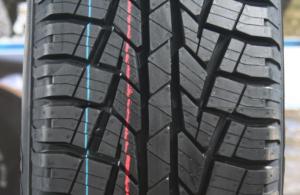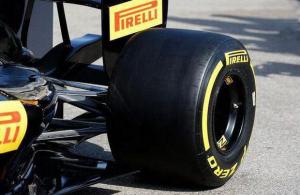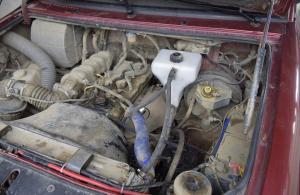Any motorist will tell you: there is no foreign car more popular in Russia than the Kia Rio. It won't take long for dealers to have a new generation car. Today, finally, we found out what the Russian version of the Korean sedan will look like and when it will appear at dealerships.
Some may be surprised by the fact that the new generation Kia Rio is already available in Europe; recently, sales of the model began in Ukraine. And we still don't have it. It turns out that we are "behind the whole planet"? Not certainly in that way. The fact is that a hatchback is being sold in Europe, which has little in common with the Russian "Rio". Our "Rio" is a "reprint" from the Chinese Kia K2, demonstrated in China last year. Why didn't she show up earlier? Because in Russia, they first expected the premiere of the new Hyundai Solaris, with which Rio are twin brothers.

It turns out that the new generation Kia Rio is unique only externally. The chassis and power units of the novelty are the same as those of the new Hyundai Solaris. Okay, let's talk about looks. The new "Rio" received a narrow radiator grille, stretched headlights, a thin jumper connecting narrow taillights. An interesting detail: the area for the rear license plate has moved from the trunk lid to the bumper.
Salon Kia Rio after the change of generations has become more solid and stylish. The strict style of interior design has remained unchanged, the ergonomics have increased, however, according to experts, the screen of the multimedia system could be raised higher.

In terms of dimensions, the new Kia Rio is larger than its predecessor, but only nominally: only 23 mm in length and 40 mm in width. Now it is 4400 mm long and 1740 mm wide. The wheelbase has increased by 30 mm and is now 2600 mm. But the ground clearance has not changed: it is, as before, equal to 160 mm. The developers have increased the volume of the fuel tank up to 50 liters (now - 43 liters), and the tank for the washer fluid - up to 4.6 liters (now - 4.0 liters). It looks paradoxical that the volume of the trunk has decreased by 20 liters - up to 480 liters.

According to the developers, the passengers in the back row have become more comfortable: the distance between the rows has increased by 24 mm. Moreover, in the optional set for rear riders there is a heated sofa. Also in the list of equipment there is a heated windshield and steering wheel.
Engineers tweaked the suspension settings and switched the power steering hydraulics from hydraulic to electrical. Already in the initial equipment there is an automatic emergency call system "ERA-GLONASS", as well as a system of directional stability.


About motors. The new generation Kia Rio will be equipped with a new 1.4-liter naturally aspirated Kappa petrol engine with 100 hp. (previously it was 107 hp); its maximum torque dropped to 132 Nm (previously 135 Nm); but it is achieved at lower speeds (four thousand rpm instead of five thousand). Another engine - the 1.6-liter Gamma - borrowed from the previous generation car, however, it has been modernized. The recoil remains the same - 123 hp. (max.torque 156 Nm). In both cases, 6-speed transmissions are used: manual and automatic.

There is no doubt that the new Kia Rio will cost more than its predecessor. A car of the current generation can be purchased for 651 thousand rubles. The top modification "pulled" on "nine hundred and a half", but, as some experts suggest, this time "a million will be overcome."
And about the main thing. Sales of the new generation Kia Rio will begin in Russia in August. The list of complete sets and prices will be announced later - on the eve of the start of sales. The sedan will come to our market first; hatchback Kia Rio will have to wait until the end of the year.
) of Russian production, assembled at the Hyundai Motors Manufacturing Rus plant near St. Petersburg. The car recently went through a planned restyling, which is intended to refresh the interest of buyers in one of the bestsellers on the market.
The Koreans officially presented the updated Euro-version of Rio in October at the 2014 Paris Motor Show. Such cars are now officially sold in neighboring Kazakhstan and Ukraine. Unlike the Russian model, this version of the Korean assembly boasts a wider range of bodies: a bright youth "three-door" is also a company for a 5-door hatchback and a classic sedan.
Outside - beautiful
By the way, the practical 5-door modification also looks stylish and dynamic. Once again, I admire the design and managerial genius of Peter Schreier, who in a fairly short period of time was able to transform many Kia models from unremarkable "gray mice" into a very worthy and modern product that today competes on equal terms with the leaders of the world auto industry. True, according to rumors, the talented designer and manager will soon leave the Korean company, and Luc Donckerwolke from VAG will take his place.

The facelifted Euro-Rio really looks great no matter how you look at it. I especially liked the updated rear of the car - with a black plastic insert "a la diffuser" and reflectors in the form of boomerangs: unusual and beautiful. Restyling also affected the shape of the radiator grille, front bumper and front fog lights.
By the way, the flagship Top configuration also includes LED daytime running lights in the headlights, as well as rear LED optics. Our average Mid performance, however, is content with normal "eyes."

The wheelbase of the European Rio is exactly the same as that of the Russian-built hatchback - 2570 mm. But the rest of the dimensions are different. Auto is 70 mm shorter (4050 mm), 15 mm lower (1455 mm), and at the same time wider by 20 mm (1720 mm). Although, if you put both cars side by side, the novelty visually seems even more compact and squat.

The ground clearance of the car is purely "European": 140 mm, which is 20 mm less than the Russian-made model, adapted to local road realities.
The interior is also good
As in the case of the exterior, the interior of the car is made very stylishly and of high quality: in appearance and to the touch, it is definitely better than that of a fellow Russian assembly. The interior pleased me with well-thought-out ergonomics: everything is simple, convenient and intuitive.



I would attribute to miscalculations the not very comfortable center armrest with a very short stroke: the elbow of the right hand practically does not reach it. And on the left, on the door card, they placed a small recess for small things - just in the place where you want to rest your left hand.
The seating position is low, but the driver's seat is height-adjustable, and the steering column is adjustable in two planes, allowing you to choose the optimal position behind the wheel. The multifunctional steering wheel, trimmed with leather, lies comfortably in the hands.

The air conditioning control unit is organized very stylishly and functionally (climate control is available only in the top-end configuration). The unusual large keys are not only extremely comfortable, but also evoke some associations with expensive supercars: bravo to the designers!

In the dark, the red illumination of the standard multimedia system slightly tires the eyes - however, its brightness can be adjusted to your taste. For a phone or smartphone, there is a convenient niche behind the gear selector. Above it is a 12 volt socket, as well as USB and AUX connectors.
The glove compartment of a decent size can easily accommodate A4 documents, and also received cooling and lighting. Small items can also be stored in the door card pockets and in the center armrest box.



The luggage compartment has a very modest volume - 288 liters in the stowed state. If you fold the separate backs of the rear seats, you get an almost flat area of 925 liters. The compartment threshold is high enough. There is a niche under the floor with a spare wheel.



But in motion - not very ...
For the test we got a car in the Mid configuration, equipped with a 1.4-liter gasoline 16-valve engine (with distributed fuel injection) with a capacity of 109 hp. and an outdated 4-band "automatic". In dynamics and behavior on the track, such a car is significantly inferior to the Russian version with a 1.6-liter engine (123 hp) and a more advanced 6-speed automatic transmission.

The test hatchback accelerates without enthusiasm: 0-100 km / h in 13.2 seconds (versus 11.2 seconds for the model from the Russian Federation). For a sharp and aggressive ride, such a car is definitely not suitable. A classic automatic transmission with a 4-speed torque converter by modern standards looks like an outdated solution, albeit reliable. Yes, it shifts gears softly and smoothly, but sluggish dynamics and increased fuel consumption became the price for this. So, when driving on the highway at a speed of 90-100 km / h Rio "eats" about 6.2-6.4 l / 100 km, and in the urban cycle - up to 9 l / 100 km. In the menu of the on-board computer, you can select a special Eco-mode, but the effect of it is almost imperceptible, but the character of the car becomes even more sluggish.
The transmission does not have a sport mode, but it is possible to manually change gears with a lever. The power unit, despite its 109 horsepower, can hardly be called high-torque: the peak torque of 137 Nm is reached at 4200 rpm. Against this background, the parameters of vigorous and economical diesel units available to European buyers of Kia Rio look much more advantageous. However, this 1.4-liter "gasoline" is quite enough for the usual measured driving around the city.

The suspension of the Korean hatchback has a standard B-segment scheme: McPherson struts in front and a semi-dependent beam on the rear axle. The undercarriage turned out to be quite soft and comfortable, but it is distinguished by increased noise when working out the unevenness of the road surface. The car behaves stably in corners: more predictable than the Russian hatchback. Rio perfectly holds the trajectory at high speeds (although this is not her element) and practically does not prowl when it falls into ruts rolled out by heavy trucks. Hard breakdowns of the suspension occurred only when hitting frankly large holes.
In our country, the Kia Rio is a model that is primarily popular due to its price / quality combination. However, in Europe things are different, because here a completely different machine is being realized under this name. The car in the specification for the Old World was presented to the public in March 2011 at the Geneva Bridal Show, and in the fall of 2014 its updated version debuted on the stage of the Paris Motor Show.
The "European" Kia Rio is available in two body versions - a three- or five-door hatchback, but regardless of the modification it looks bright and dynamic, largely due to the current corporate identity.
The most noticeable details in the appearance of the "Korean" are the large head optics encircling the narrow "mouth of the tiger", embossed bumpers and expressive embossing on the sidewalls that add swiftness to the silhouette.
In terms of its external dimensions, the 3rd generation Rio hatchback belongs to the B-class: 4050 mm in length, 1720 mm in width and 1455 mm in height. The distance between the front and rear axles of the hatchback is 2570 mm, and its curb weight varies from 1127 to 1249 kilograms.

The interior of the "third Rio" is tailored in the "family" direction of the Korean automaker - a stylish instrument cluster with three "deep wells", a large steering wheel and an ergonomic center console, on which a 7-inch screen of the multimedia center is sheltered (in available configurations, its place is occupied by a plug or a simple radio tape recorder) and the air conditioning unit. Torpedo "flaunts" mostly hard plastics, but there are no frankly budget materials in the car.
The front seats of the "European" Kia Rio are distinguished by optimal support at the edges, soft filling and sufficient adjustment ranges. Formally, a three-seater rear sofa with maximum comfort will accept only two passengers, for whom there will be plenty of space on all fronts.
The hatchback's arsenal (regardless of the number of doors) has a modest luggage compartment that can hold 288 liters of luggage. The second row of seats folds in asymmetrical sections into a flat cargo area, which increases the maximum capacity to 923 liters.
Specifications. In the countries of the Old World, the third generation Kia Rio is equipped with two gasoline engines.
The base unit is a 1.25-liter unit, producing 83 horsepower at 6000 rpm and 122 Nm of torque at 4000 rpm, and a 5-speed "mechanics" is a pair with it. Such a hatchback leaves behind the first hundred after 12.9 seconds, and its "maximum" is limited at around 168 km / h.
The most productive version is the 1.4-liter 107-horsepower, the output of which is 137 Nm, starting at 4200 rpm. There are two gearboxes for it - a 6-speed manual gearbox or a 4-range automatic gearbox. Depending on the modification, the car can accelerate to 170-183 km / h, accelerating to 100 km / h in 11-12.7 seconds (in favor of the manual transmission).
The diesel part is formed by two turbocharged engines: a 1.1-liter, developing 74 "horses" at 4000 rpm and 180 Nm of torque at 1750-2500 rpm, or a 1.4-liter with a potential of 89 horsepower and 240 Nm at a similar number of revolutions ... For heavy fuel units, only six gears are available, which helps it to reach the 100 km / h mark after 13.4-16.1 seconds and peak capabilities of 160-169 km / h.
All power plants on the third Rio in the specification for the European market meet the environmental standards "Euro-6" and are combined with the "start-stop" technology by default. Gasoline versions of the hatchback in a combined driving cycle cost 5-6.3 liters of fuel, while diesel versions require only 3.3-3.8 liters of diesel fuel.

At the heart of the "third Rio" is a front-wheel drive platform with MacPherson struts in the front axle design and a semi-independent rear suspension with a torsion beam. For better handling, the "third" Kia Rio is equipped with an electric booster, and a high level of safety is provided by disc brakes on all wheels with ABS and ESP.
Prices. In the European market, the three-door hatchback Kia Rio is priced at 10,990 euros, for the version with five doors they ask for 700 euros more.
By default, the car is equipped with six airbags, ABS and ESP, BAS and ESC systems, 15-inch steel wheels, heated and electrically operated exterior mirrors, and a central locking with remote control. Amenities such as air conditioning, audio systems, power windows and even a spare wheel are offered as optional equipment.


